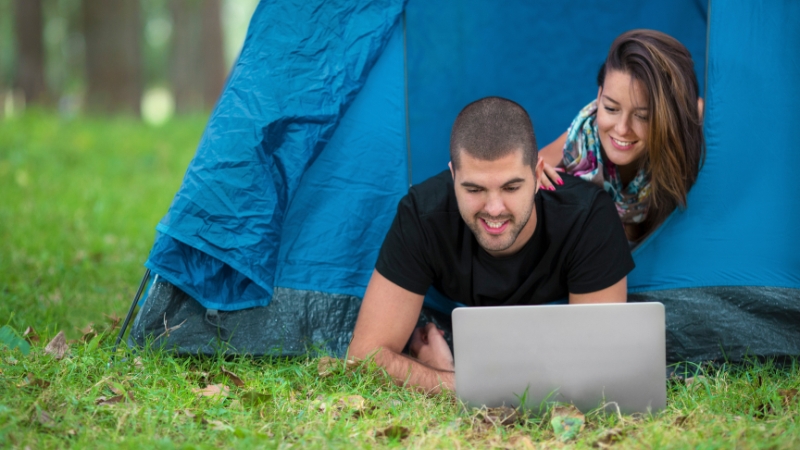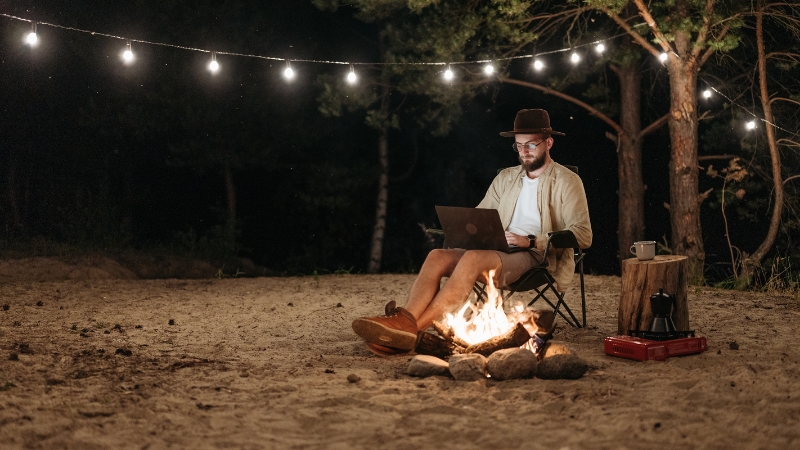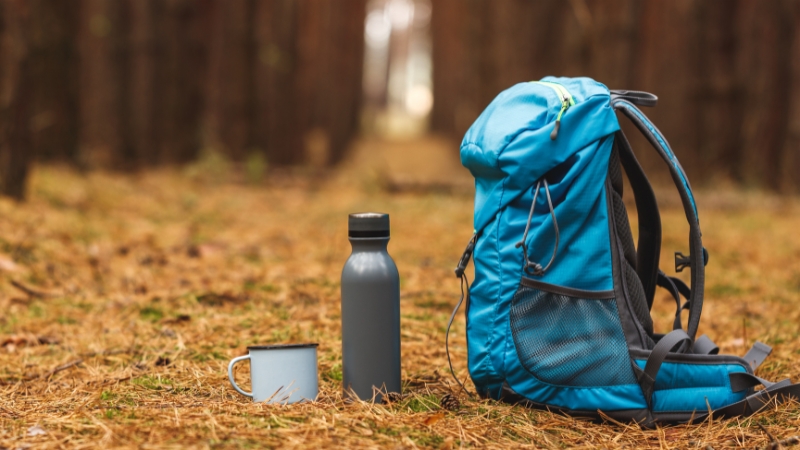Outdoor recreation continues to boom, with more consumers choosing nature-driven lifestyles and seeking gear that supports their passion.
As eCommerce tools become more accessible, now is the prime moment to grow an outdoor brand online.
Building an online presence means more than just selling gear; it means planting roots in a digital space and nurturing a community.
Think of the brand’s growth as a trek: beginning at basecamp with an idea and scaling to a fully charted online identity.
Laying the Groundwork

Building an outdoor brand begins with smart preparation. Before any product is sold or any content is published, a solid foundation must be set.
Key elements at this stage include conducting market research, establishing a legal structure, choosing a niche with strong demand, and defining clear business goals.
Below are the crucial components every outdoor brand should address at the beginning:
Research and Legal Setup
Success starts with clarity. Research uncovers gaps in the market and highlights ways to position the brand effectively.
Values such as sustainability, freedom, or rugged independence help shape messaging that resonates with target audiences.
Essential legal and financial tasks also lay the groundwork for stability and credibility.
Key steps include:
- Analyze competitor strategies and identify what sets your offering apart
- Define brand values that connect with outdoor-minded consumers
- Choose a legal structure:
- LLC for liability protection and operational flexibility
- Sole proprietorship for simpler administration and low startup costs
- File legal documents and register the business
- Open a dedicated business banking account
- Obtain tax identification numbers and set up basic accounting
Niche Selection and Market Fit

Selecting a niche sharpens branding and increases engagement.
Whether it’s long-distance hiking, kayaking, or eco-travel accessories, focus gives a brand the power to stand out.
To determine the right fit:
- Select a specific outdoor category that reflects your mission
- Use keyword tools, search data, and social media listening to confirm interest
- Launch surveys or polls within target communities to measure actual demand
- Avoid over-saturated niches unless backed by innovation or a pricing advantage
- Match the brand’s tone and design to the lifestyle of a well-defined customer group
Goal Setting and Business Models
Goals keep every decision grounded. Vague ambition leads to scattered results, but SMART goals help track progress and steer strategy with precision.
Monetization choices will also shape how the brand operates and scales.
Focus areas include:
- Define SMART goals:
- Specific
- Measurable
- Achievable
- Relevant
- Time-bound
Common targets may include:
- Monthly revenue milestones
- Email list growth or social media engagement
- Conversion rates and return customer percentage
Choose a business model:
- Direct-to-consumer for full control over branding and customer data
- Franchise or licensing model for broader but more complex distribution
- Tech-driven models like subscription boxes or outdoor gear rental apps
- Plan for scalability in logistics, supply chains, and digital infrastructure
Branding Your Adventure
View this post on Instagram
Building a successful outdoor brand takes more than gear and graphics.
It requires a well-defined identity that speaks directly to those who live for open trails and starry skies.
Every interaction, from a homepage visit to a logo on a water bottle, should reflect a purpose and a point of view.
Visuals, tone, and messaging should echo the values customers already carry with them into the wild.
Crafting a Compelling Brand Identity
Voice, tone, and visuals must align with brand values.
A rugged, minimalist aesthetic works well for products aimed at solo adventurers and ultralight travelers.
In contrast, vibrant colors and energetic design elements better suit family campers or group-oriented outdoor brands.
Visual consistency builds familiarity. Logos, typefaces, and color schemes need to remain steady across all platforms and materials.
Brand storytelling through emails, websites, packaging, and social posts invites customers to connect emotionally.
Slogans That Stick
A strong slogan distills a brand’s message into a few carefully chosen words. It should trigger both emotional connection and practical interest.
Nature-focused language connects with people who long for trailheads, open water, or mountain sunrises.
Slogans can be catchy, funny, professional, or clever. Tone should match the brand’s personality and audience expectations. Examples include:
Building an Online Presence via Website and Content
Creating a strong online presence is essential for any outdoor brand looking to build lasting engagement and consistent sales.
A digital storefront must feel just as reliable and inviting as a physical gear shop.
That means more than good-looking visuals; functionality, clarity, and trust elements must work in harmony.
When paired with a thoughtful content strategy, the result is a brand that informs, inspires, and converts.
User-Friendly eCommerce Website
Mobile-first design ensures accessibility across devices. Fast load times reduce bounce rates, while clean UX allows easy navigation.
Clear call-to-actions, such as “Shop Now” or “Build Your Kit,” guide users.
Trust grows through well-placed reviews, transparent return policies, and visible contact options.
A successful site does more than showcase gear; it becomes a familiar hub for outdoor enthusiasts to return to with confidence.
Brands offering services, such as guided trips, should also prioritize functionality.
Those looking to build a fishing charter website, for instance, must ensure clear booking flows, trip details, and seasonal availability are front and center.
Content Marketing Strategy
Content builds long-term relationships. Seasonal guides, how-to videos, and product comparisons create ongoing value.
SEO targets both branded terms and broader searches like “best winter sleeping bags.”
Visual content, like infographics or packing lists, adds variety.
Featuring real user stories or expert insights enhances credibility and keeps the feed fresh and engaging all year.
Marketing That Moves Mountains

Outdoor brands thrive when they connect with adventure-seekers across digital channels in a way that’s:
A strong mix of paid promotion and organic engagement creates momentum that grows traffic and loyalty.
Performance Marketing
Paid efforts offer fast traction when guided by analytics and timing.
Reaching people when they’re planning trips or shopping for gear gives a brand a clear advantage.
These strategies focus on speed, precision, and intent-driven conversion:
- Paid search targets customers actively looking for outdoor products
- Social media ads deliver brand stories in visual form
- Influencers show gear in action, adding authenticity
- Geotargeting reaches customers in high-activity regions
- Retargeting re-engages visitors who left without purchasing
Organic Growth Tactics
Sustainable visibility grows through meaningful content, strategic communication, and partnerships.
These tactics cost less than ads but build lasting trust:
- SEO increases traffic through optimized blog posts and landing pages
- Email marketing keeps customers informed about product drops and events
- Newsletters share brand stories and seasonal promotions
- Loyalty programs reward repeat buyers and drive referrals
- Collaborations with outdoor organizations build community alignment
Social Proof and Loyalty

User-generated content, reviews, and loyalty programs help turn satisfied customers into brand advocates.
A few ways to leverage this:
- Feature real photos of gear in action on product pages and social feeds
- Encourage user participation through hashtag campaigns or contests
- Make review submission simple to amplify trust signals
To maintain a lasting relationship:
- Offer perks, early access, or exclusive discounts to loyal customers
- Use referral bonuses to incentivize sharing with friends
- Keep engagement alive year-round with seasonal content and maintenance tips
- Analyze customer behavior to fine-tune outreach and product offerings
Marketing is not a sprint toward conversion. It’s a strategic ascent that rewards consistency, relevance, and a clear brand voice at every step.
Final Thoughts
@cutedilf 0 sales. 1 dream. 48 steps closer. Day 2 of building my outdoor clothing brand from the ground up — until I can afford my dream car. No fluff. No overnight success story. Just a real person learning the ropes, sending out my first SMS campaign, launching my first ad, and figuring it all out one day at a time. Today the ad didn’t hit. No conversions. But I showed up. Built momentum. Sent messages. Watched 48 people check out the brand. That’s 48 more than yesterday. This isn’t about hype. It’s about the long haul. It’s about creating gear that belongs in the mountains, the woods, and the grind. If you’re into the outdoors, building something meaningful, or watching someone chase a dream with everything they’ve got — hit follow. I’m not stopping. And if you’re reading this, you’re here early. 🏕️🚙💨 #fyp #viral #BrandInTheMaking @Cold Creek Co. ♬ Natural Emotions – Muspace Lofi
Growing an outdoor brand online requires structure, creativity, and persistence. It’s a step-by-step process, from spark to strategy, content to conversions.
Starting now means seizing momentum while cultivating a brand that thrives long-term.
Keep pace steady, eyes focused, and build with authenticity.

